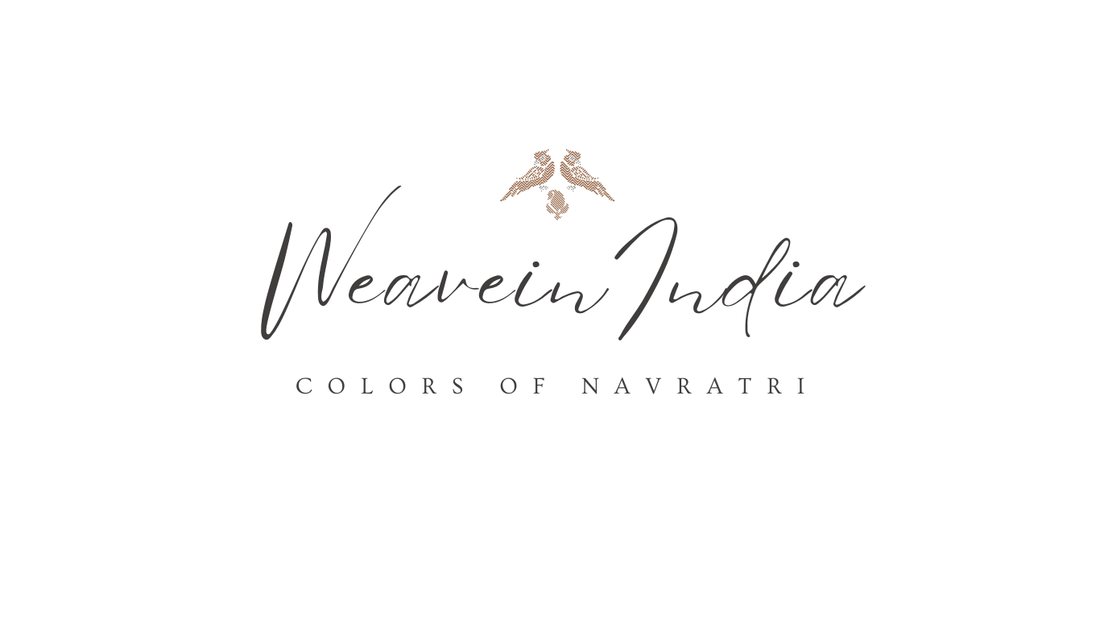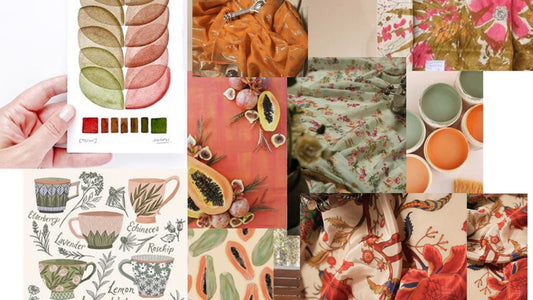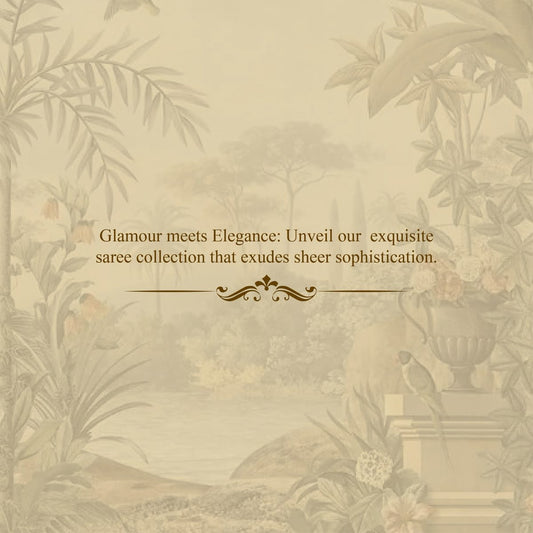
Sarees in Sacred Shades - The Significance of Navratri’s Nine Colours
Share
Navratri is one of India’s most vibrant festivals, celebrated with devotion, music, dance, and of course, colour. Across the nine days, devotees honour the nine forms of Goddess Durga, and each day is associated with a specific colour that carries deep spiritual meaning. In many parts of India - especially Maharashtra and Gujarat - these colours inspire daily dressing, from sarees and lehengas to festive ensembles.
At WeaveinIndia, we believe sarees embody the perfect canvas for this tradition - blending spirituality, culture, and timeless fashion. Here’s a detailed look at the nine Navratri colours, their significance, and how you can bring them alive in your festive saree styling.
Day 1 – White (Sept 22, Monday)
Goddess: Shailaputri | Significance: Purity, peace, a fresh start.
The festival begins with serenity and simplicity. White symbolizes the calm strength of a new journey.
Embrace purity in a white saree, and let your drape reflect the peace and grace of the goddess.

Day 2 – Red (Sept 23, Tuesday)
Goddess: Brahmacharini | Significance: Energy, devotion, strength.
Red awakens the spirit, embodying passion, power, and commitment.
Celebrate the feminine force in a bold red saree, channeling energy and devotion with every pleat.

Day 3 – Royal Blue (Sept 24, Wednesday)
Goddess: Chandraghanta | Significance: Dignity, depth, tranquility.
Royal blue brings dignity and balance, calming the soul while adding grandeur.
Drape yourself in royal blue, and embrace the divine balance of strength and serenity.

Day 4 – Yellow (Sept 25, Thursday)
Goddess: Kushmanda | Significance: Joy, optimism, light.
Yellow shines with brightness, a colour of creativity, warmth, and positivity.
Celebrate optimism in a radiant yellow saree, carrying the light of joy in every fold.

Day 5 – Green (Sept 26, Friday)
Goddess: Skandamata | Significance: Growth, renewal, harmony.
Green reflects fertility, compassion, and fresh beginnings.
Embrace harmony in a green saree, honouring the nurturing power of the divine feminine.

Day 6 – Grey (Sept 27, Saturday)
Goddess: Katyayani | Significance: Composure, resilience, balance.
Grey, subtle yet powerful, represents inner stability and wisdom.
Celebrate resilience in a graceful grey saree, embodying quiet strength with elegance.

Day 7 – Orange (Sept 28, Sunday)
Goddess: Kalaratri | Significance: Courage, energy, celebration.
Orange is vibrant, fiery, and full of life — the colour of courage and celebration.
Embrace vibrancy in an orange saree, radiating festive energy and bold spirit.

Day 8 – Peacock Green (Sept 29, Monday)
Goddess: Mahagauri | Significance: Beauty, elegance, compassion.
Peacock green embodies the rare blend of grace and majesty.
Celebrate divine beauty in a peacock-green saree, a drape of compassion and timeless elegance.

Day 9 – Pink (Sept 30, Tuesday)
Goddess: Siddhidatri | Significance: Love, compassion, harmony.
Pink closes the festival with warmth, harmony, and love.
Embrace tenderness in a pink saree, celebrating compassion and the blessings of the goddess.

Beyond Colours: Regional Traditions in Navratri
In Maharashtra & Gujarat, people follow these nine colours closely, often showcased during Garba and Dandiya nights.
In South India, Navratri is marked by Golu (doll displays), with sarees in auspicious shades worn for gatherings.
In West Bengal, Durga Puja overlaps with Navratri, where the iconic red-white saree dominates, especially during Sindoor Khela.
No matter the region, sarees remain a timeless choice-uniting tradition with elegance.
Celebrate Navratri with WeaveinIndia
Navratri is more than a festival - it’s a celebration of strength, grace, and the divine feminine. Dressing in harmony with the nine colours not only connects us with tradition but also allows us to celebrate fashion as a spiritual expression.
This Navratri, let WeaveinIndia help you embrace every shade of devotion with our curated sarees - woven in heritage, styled for today.



